Feast, 2021. 8x10 wet plate collodion tintype. I captured this…
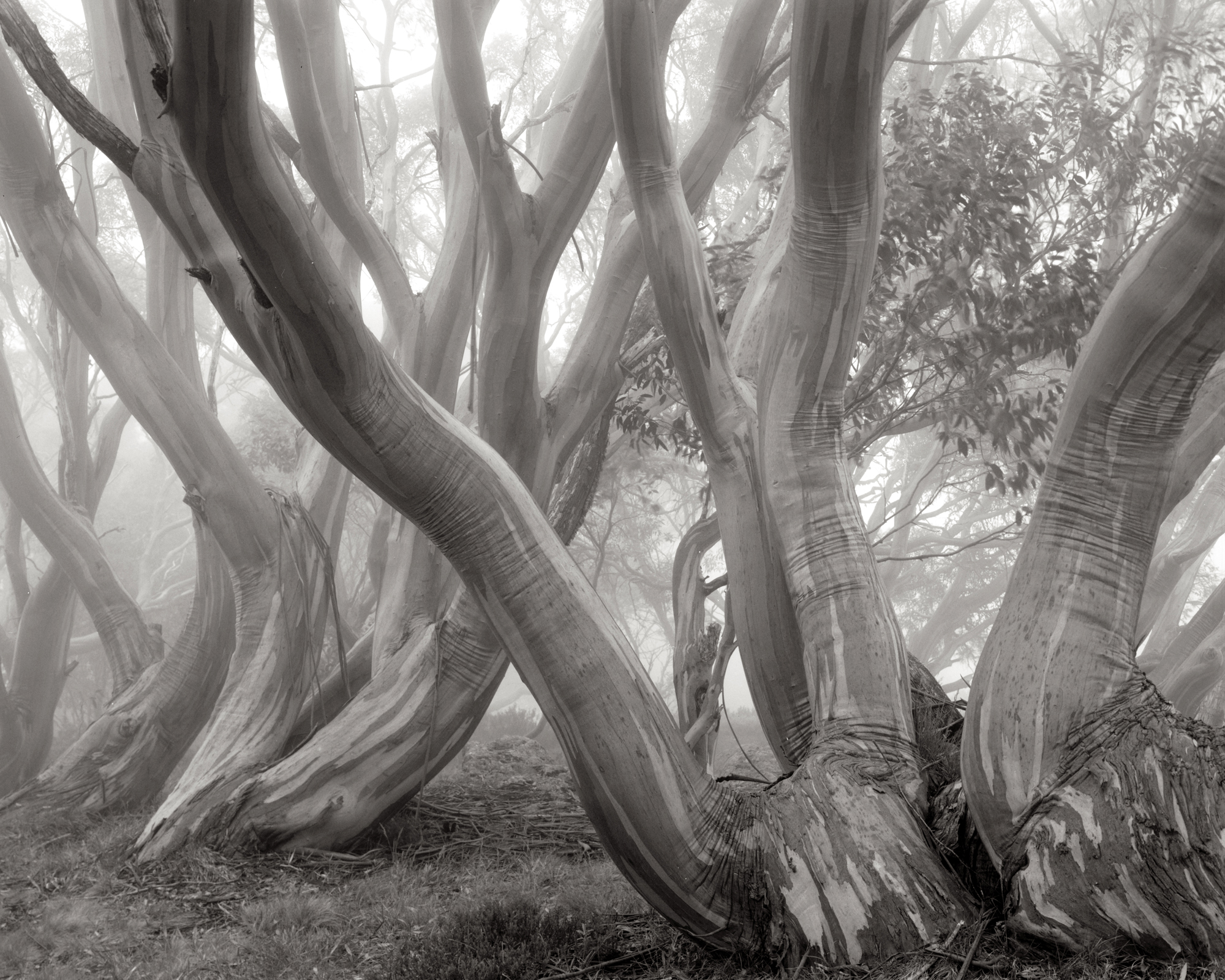
Why not eco-photography? by Gary Sauer-Thompson
A fascinating and informative interview with David Tatnall by Michéla Griffith in issue 245 of the British based On Landscape magazine about the process of photographing nature with large format cameras raises an interesting question as well as some issues about natural beauty and politics and art. This is a different pathway for photography to that opened up by a poetic photography.
The question raised is: Why is an eco-photography as distinct from landscape photography not widely recognized in photographic culture? Where are photography’s postcards from the Anthropocene that emerge from its encounters with the Anthropocene-in-the-making? The question is asked because there is a recognized eco-philosophy, even if remains marginal in academia; one that in Australia which has its roots in Val and Richard Routley’s The Fight for the Forest (1973) – the book that launched the struggle to protect Australia’s old growth native forests. This environmental philosophy becomes an eco-philosophy that is critical of the nature /culture dualism, explores the revaluing our relationship to nature in the context of an ecological crisis caused by climate heating in the era of the Anthropocene, and recognizes that Whanganui River in New Zealand as a living being and is granted legal personhood.
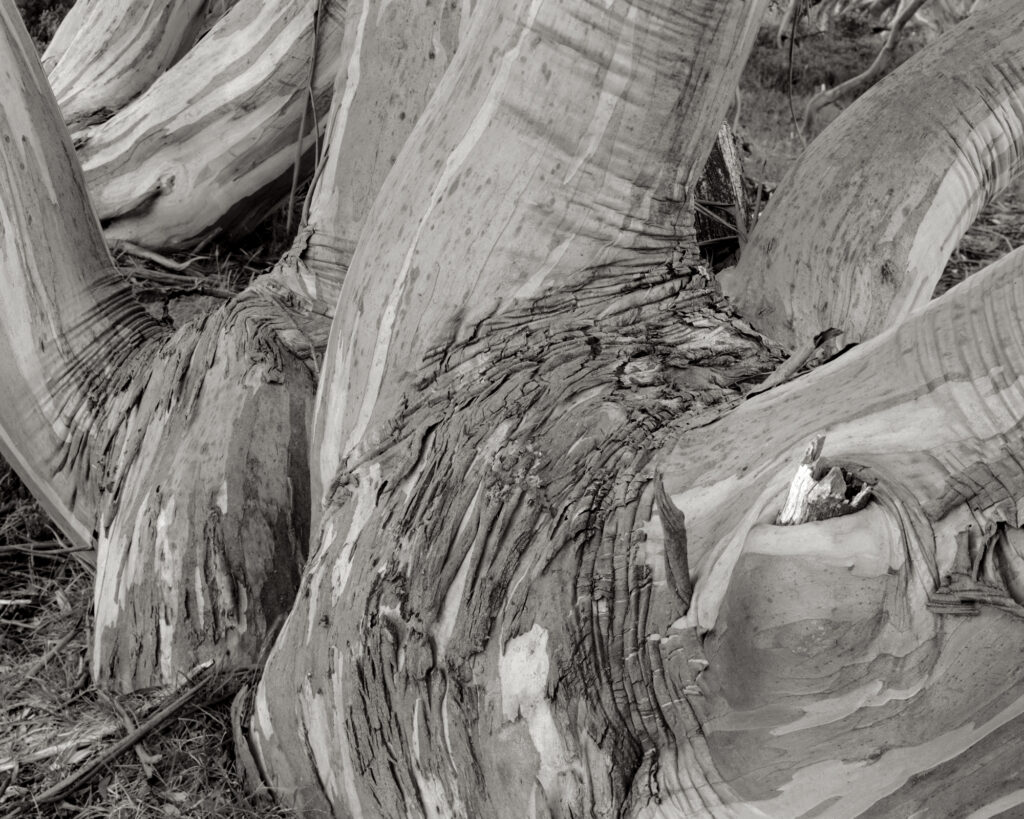
So why is there not a recognized ecologically oriented-photography as opposed to landscape photography; an eco-photography that interrogates, expands, understands and influences our relationship with nature?
We no longer live in the Holocene or the culture of the nineteenth century when relations between humans and nature seemed clear: nature was separate to humans and it was natural, beautiful, untouched. In the 21st century humans can no longer be defined as separate to the world around us. It is also recognized that a wilderness landscape photography of an uncontaminated and entirely pure nature in Australia was blind to the aboriginal occupation of the land for 50-60,000 thousand years prior to the British colonization in the late 18th century. With the wide recognition that one of the consequences of economic development has been widespread environmental damage to the country and the native old growth forests and the emergence of an Anthropocene or planetary aesthetics, then why no eco-photography?
In his interview Tatnall says that his approach to photographing nature has its roots in his early desire to see more green on the map meaning more national parks that protected the land. He adds that this desire to preserve nature was strengthened by the (unsuccessful) campaign to save Lake Pedder in Tasmania in the 1970s and the threats to the native forests in East Gippsland in Victoria in the 1980s.
He adds that the protection of Australia’s unique landscape is important, and that his motivation for his photography is being able to say something about our fragile environment by making a photograph that has an impact and meaning. This “saying something about” is based on an understanding of place that comes from spending time in that place – in Tatnall’s words “going into nature is to be in nature and if I make a photograph, it’s a bonus.”
This implies an awareness that nature has become enmeshed within our understandings of what it is to be human, and it sounds like an eco-photography, rather than a landscape photography. I would suggest that such a distinction is plausible, reasonable and necessary in the light of the body of work produced by Joyce Campbell.
Spending periods of time in nature (eg., the Alpine National Park) enabled Tatnall to photograph the before and after of the massive wildfire in 2003 that burnt for over 59 days and burned the majority of the 660,000 hectare national park. He says:
“The ferocity and intensity of recent wildfires have made going back to places very difficult for me. Although some plants and trees can survive and regrow after fires this may take decades. Some trees such as Alpine Ash, Mountain Ash (the tallest flowering plant in the world) and Snow Gums don!t survive fires. The frequency of fires has increased due to climate change and the regrowing trees have been burnt again before they could produce seed. Now the drive into the park is like driving into a cemetery of huge dead trees with no young trees to take their place.”
My interpretation of what Tatnall is saying is that this pyroscape — a landscape burnt with the savagery of a massive wildfire – is a landscape of the Anthropocene. It is represented by an ecologically informed photography of nature that stands counter to the traditional human-centered dualism that sees nature as resource to be exploited for the benefit and self-preservation of human beings. This photography counters this dualism that devalues nature by working with a relational conception of humans in an ecosystem; a relationality that Christopher Houghton says defines the various entities in nature in terms of their constitutive relations with one another whilst retaining the difference and distinctness of each.


Being in nature implies immersion rather standing outside looking on, and this in turn implies the photographer’s being is within a mesh of relations with other species and entities in an ecosystem. The large format photographer who spends time walking and dwelling in a place (eg., camping) is an ecological self who understands nature in a national park in terms of an ecological rationality.
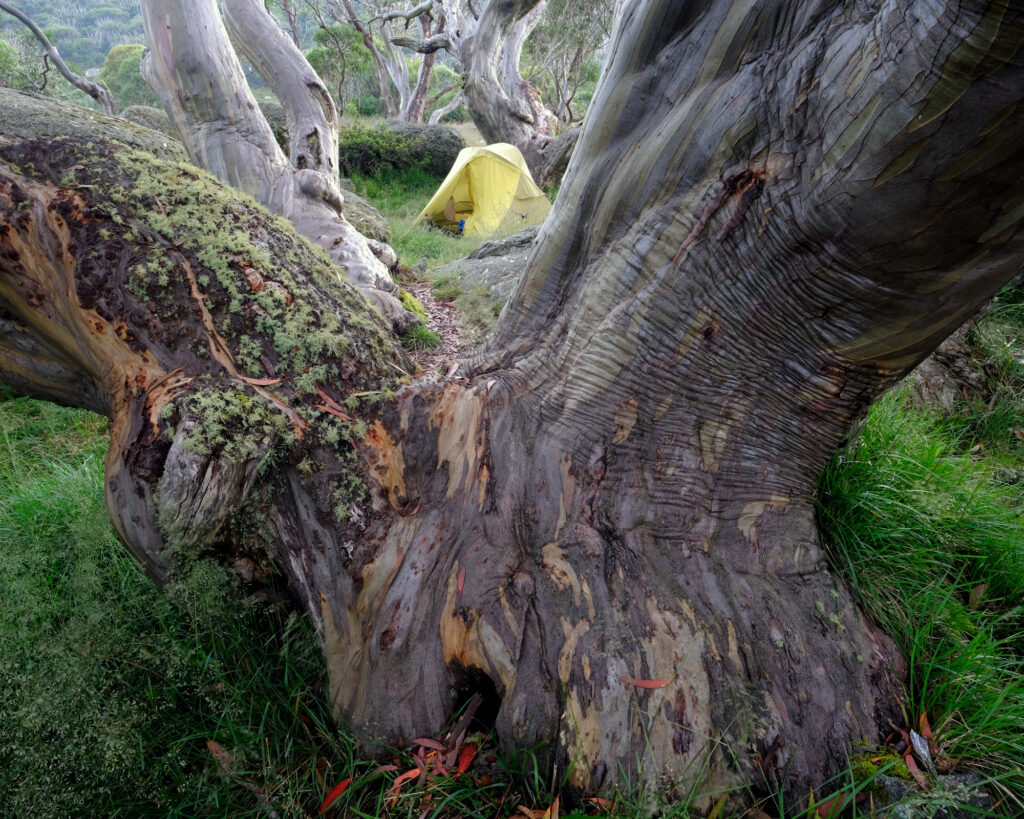
Now this is photography under a philosophic interpretation. The two however, work hand in hand: art creates blocs of public “percepts” and “affects” that stand on their own, whilst philosophy creates concepts based on a pre-philosophical field of intuitions and sensibilities. An eco-photography is one that moves away from the older European ideas of the landscape to find new ways of looking at the Australian natural environment. It is very similar in orientation to that of John Wolseley, the Australian painter, in his search for a formal language to express the unique peculiarity of the Australian natural environment.
An eco-photography that is able to say something about our fragile environment by making an image that has an impact and an environmental meaning raises the issue of art and politics. In closing the interview Michéla Griffith says that “David would be disappointed if all you took away from this article is that his photography is about conservation. While his images have undoubtedly been a good and faithful servant to it, they are first and foremost about his relationship with the land, and the spirit of place.” Griffith implies that this kind of photography is neither politics or art, but both. In what way are Tatnall’s images of natural beauty both politics and art? Unfortunately, Griffith does not address the important issue that she raises.
Tatnall’s images of natural beauty need to be viewed in the cultural context where the notion of beauty has been pretty much disparaged for a century -this is the importance of the conceptual shift of Dada. Modernism either preferred the sublime to beauty or rejected beauty as being an atemporal and apolitical ideal. (Elaine Scarry, On Beauty and Being Just). Beauty which inspires desire, passion and pleasure – the beauty of people, clothes, popular art – was correlated with fashion, marketing and advertising. Beauty is consoling whilst art desires to provoke and critique. The result of this distrust of beauty – its exile in the last two decades of the 20th century– is that many people have either actively advocated a taboo on beauty, or passively omitted it from their vocabulary, even when thinking and writing about beautiful objects such as paintings and photographs. What remains is an access to a nature for us, which is to say that our notion of nature is mediated by a nature-dominating history and a nature-dominating society.

One way to counter this rejection is to bring beauty back in by acknowledging that while art makes claims as a form of knowing, it presents us with insights that are not reducible to their conceptual equivalents. Artworks are sensuous, material, and particular; but they are not for that reason any less “true.” A minimal starting point to bring beauty back in was suggested by Arthur Danto in his The Abuse of Beauty (2003) with his idea of ‘internal beauty‘; namely that beauty may be a necessary feature of some works of art insofar as it is internal to their meaning. This would be the case when a work’s meaning requires a beautiful presentation, which must therefore figure in its interpretation as art. Many of Tatnall’s images do this.
Theodor Adorno in Aesthetic Theory highlights another possible counter to the rejection of beauty in that the images of natural beauty suggest a critique of the exploitative instrumental one of dominating nature for the sake of endless growth. The images of natural beauty present to humans what is not reducible to the human – we can gain a sense of otherness or what is unique in particular natural things. What then is this otherness? The images express the consequences of the domination of nature as nature’s past and ongoing suffering eg., Tatnall’s reference to the Snow Gums in the Alpine National Park unable to reshoot because of the frequency and intensity of the bush fires.
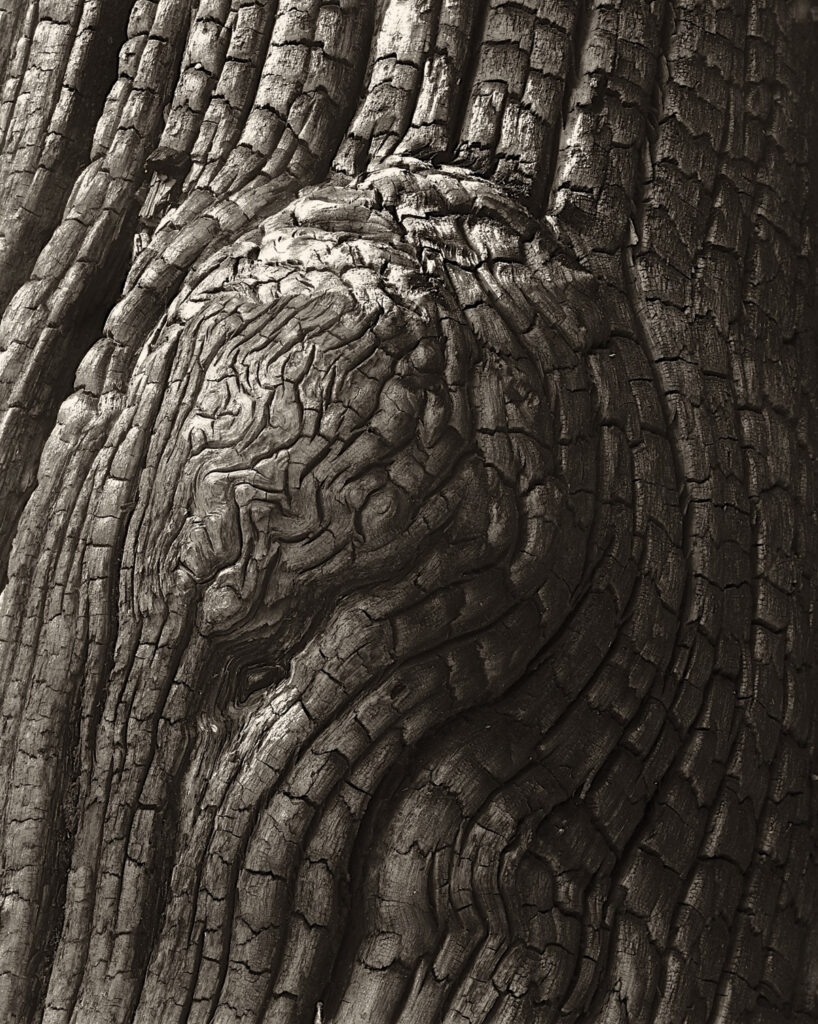
Nature’s suffering from being harmed is outside the identity language of neo-classical economics and the importance of artworks is that they show the appearances of this otherness in a non-conceptual way; by making us aware of the suffering, the images implicitly criticize the values and language of our existing society that since colonization has seen nature as an adversary out of the anxiety for self-preservation. This is a form of thinking that sees itself as the opposite of nature. The natural beauty in an eco-photography gives voice to a mutilated nature, which is one way to distinguish it from landscape photography.
Adorno argues that that a further significance of natural beauty is that it is a manifestation of a non-instrumental relationship to nature, a result of contemplating nature as appearance as opposed to the control of nature for human purposes, such as the interests of self-preservation or profit. The experience of natural beauty and the aesthetic experience of a work of art are a perception of images of a beyond: that is, that which is beyond the exchange relations of instrumental reason. It is in art where humanity!s dependence on nature that has been repressed is remembered; it is art that bears witness to the kinship and affinity between human beings and nature. It suggests to us that there are other ways to view nature that are in opposition to the re-enchanting of nature that we see in TV adverts about 4 wheel drives in the “wilderness“.
The beauty of art now carries the burden of what nature once promised in the guise of natural beauty,, and it takes the unwavering eye of the artist to picture it; a promise of a possible future reconciliation between humanity and nature not only for our own sake but also for the sake of non-human nature — if we acknowledge ourselves as part of nature.
The above remarks suggests that we need to think in terms of an eco-photography as a response to the entangled relations that we are experiencing living within the Anthropocene. It is a photography that accepts it cannot fully grasp the scale of the Anthropocene, but that it can offer us glimpses at what it does in breaking down the order of things that we once took for granted.
Main photograph above: David Tatnall. Old growth Snow gums. 2022. Bogong High Plains. Alpine National Park. 24 x 30 cm silver gelatin print.
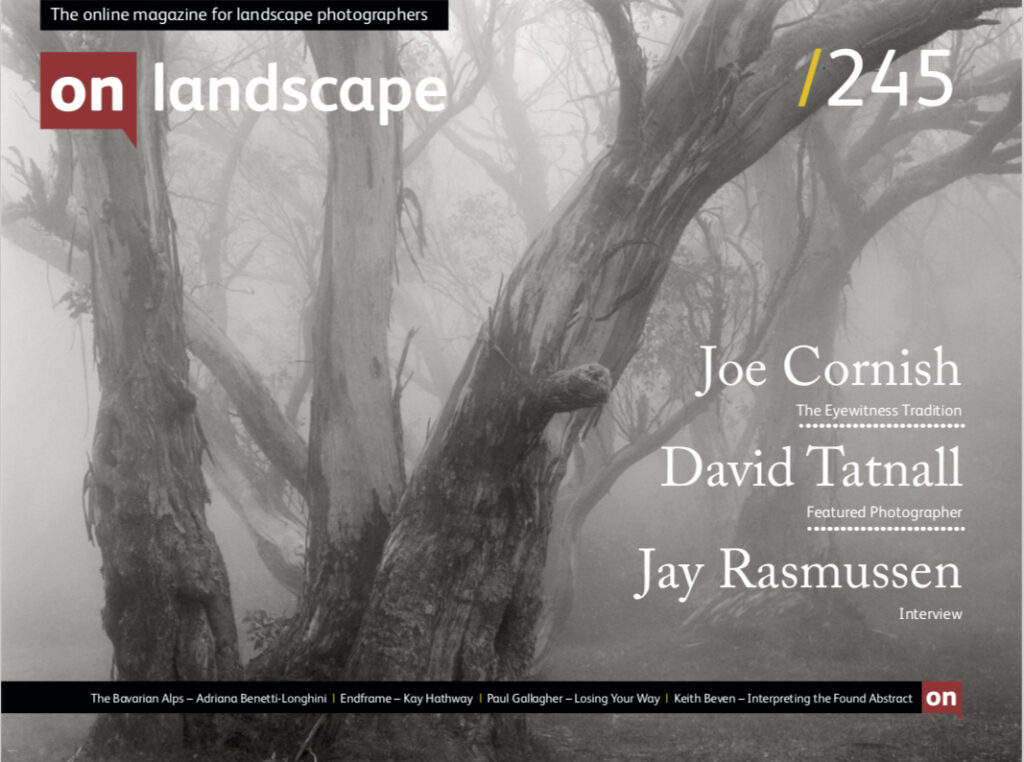
Previous Post: Folio: Murray White

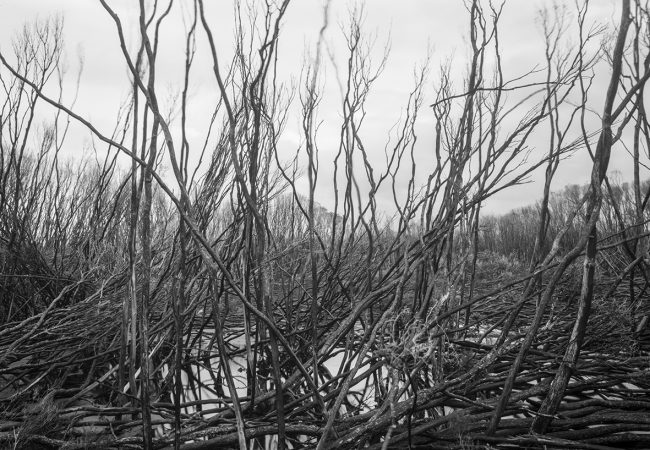
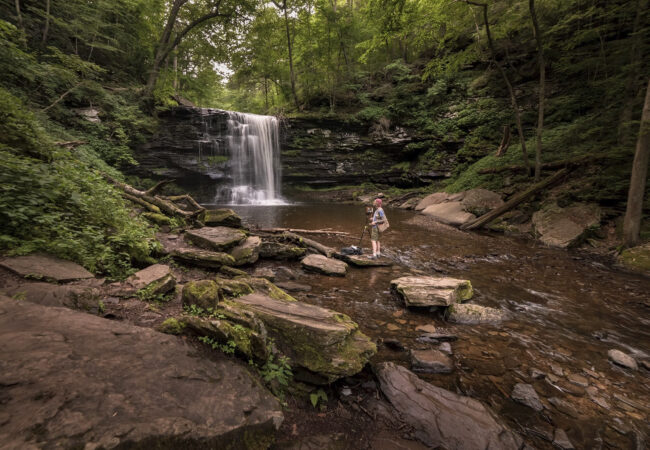

Gary, thank you very much for this article. I hope it’s the start of a conversation about landscape photography.
Yes, I hope so too. There is not much of an ongoing conversation about landscape photography in Australian photographic culture. It would be great to see this start to change, given the interesting photography that is currently being done.
There is the article by Rebecca McCauley in the Melbourne based Un Magazine 12.1 (2018) entitled ‘Australian landscape photography: the colonial project, the panorama, its undoing’.
https://unprojects.org.au/article/australian-landscape-photography-the-colonial-project-the-panorama-its-undoing/
I do not know of anything more recent–apart from Christopher Houghton’s recent PhD for the University of South Australia.
Insightful and thought provoking as always Gary.
Like David, many of the areas I have been photographing in Victoria in the last 19 years have been seriously impacted by fire to the point that post-fire recovery and regeneration has become a major theme of my ongoing work. Despite that, of the work I have had published in conservation related publications in that time, not once has a photograph focusing on fire affected areas ever been selected for publication.
You raise some fascinating questions in this time when mega-fires are now regularly impacting our national parks and other wild places, not to mention the direct impact of our visitation on these areas.
Mark, do you think that a reason why not one of your photographs focusing on fire affected areas has ever been selected for publication is that they are seen as documents or photojournalism and not as art? Documents of fire ravaged areas are published in newspapers as documents.
I would have thought that they would have been interpreted as the sublime –as that which causes fear, terror and horror. That is how I would understand them. People who have experienced the mega fires in Victoria and NSW talk about them in terms of terror and horror in the face of wild fires that create their own climate.
https://thebrooklyninstitute.com/items/courses/new-york/the-sublime-aesthetics-terror-and-pleasure-3/